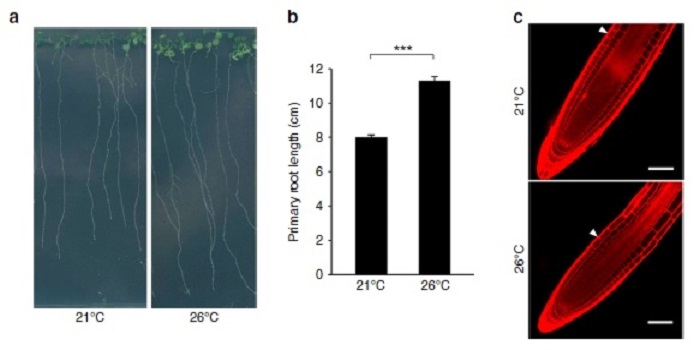
Brassinosteroid signaling-dependent root responses to prolonged elevated ambient temperature
Blog, Plant Science Research Weekly, Research, Research BlogTemperature is one of the major factors affecting plant growth and development. Martins et al. showed that elevated temperature increases root growth through elongated cell size, but reduced both meristem size and number of meristematic cells. The elongation of root growth during elevated temperature…
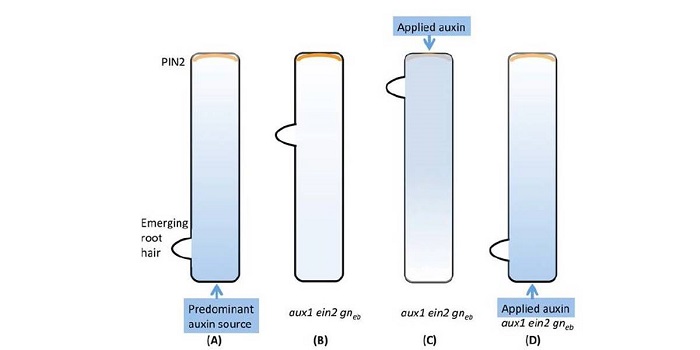
Review: Auxin signaling
Blog, Plant Science Research Weekly, Research, Research Blog0 Comments
/
Leyser summarizes our current understanding of the what, how and why of what auxin does (and doesn’t) do. For example, she points out that, “Auxin does not instruct cells to do anything in particular, but rather it influences the behavior of cells according to their pre-existing identity.” She…

Aquaporins facilitate hydrogen peroxide entry into guard cells to mediate ABA- and pathogen-triggered stomatal closure ($)
Blog, Plant Science Research Weekly, Research, Research BlogGuard cells are crucial gatekeepers that control entry and exit of gases, water vapor, and pathogens. Rapid stomatal pore closure in response to pathogen perception or the hormone abscisic acid (ABA) is supported by activation of the aquaporin (water channel) PIP2;1. Rodrigues et al. investigated the…
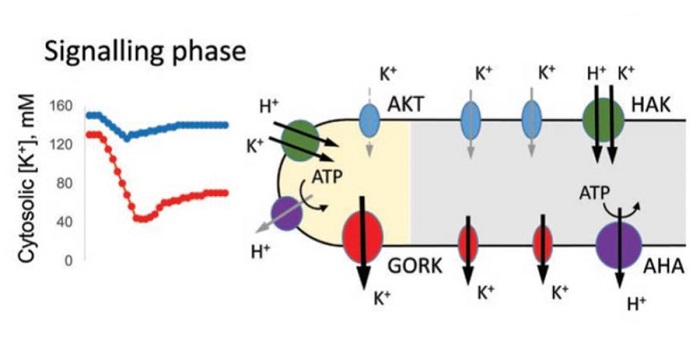
Viewpoint: Signalling by potassium: another second messenger to add to the list?
Blog, Plant Science Research Weekly, Research, Research BlogPotassium (K+) retention in the roots and shoots is correlated with increased tolerance to salinity and drought. However, in response to salt stress, K+ efflux from roots is induced. Shabala investigates three possible reasons for this stress-induced K+ efflux: K+ could leave to charge-balance the…

A Regulator of Calcium Signatures Revealed
Blog, Plant Physiology, Plant Physiology: On The Inside, Research, Research BlogCalcium (Ca2+) is an important cellular second messenger for diverse developmental processes and environmental responses in both plants and animals. Transient increases in cytosolic Ca2+ are activated in plants during a host of environmental and developmental processes, including root growth, stomatal…

J. Exp. Bot. reviews auxin ($)
Blog, Plant Science Research Weekly, Research, Research BlogThe Journal of Experimental Botany is publishing a good collection of review articles on auxin. Topics include ARF transcription factors, Auxin’s role in lateral root formation, Auxin research in rice and implications for crop improvement, Integration of multiple auxin signaling pathways, Evolution…
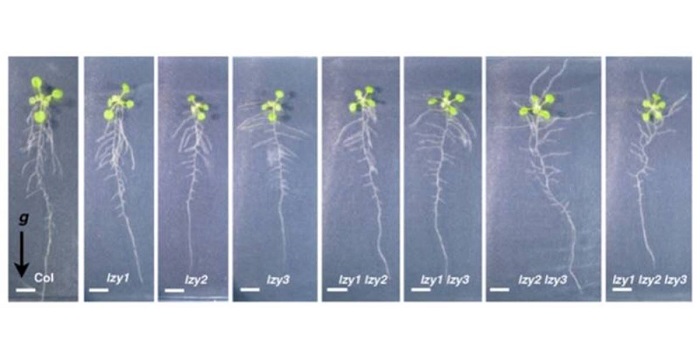
LAZY1 family contributes to gravity signaling within statocytes and branch angle control of roots and shoots
Blog, Plant Science Research Weekly, Research, Research BlogIt’s easy to demonstrate that plants sense gravity, and we also know that statocytes are involved in the perception of gravity. Statocytes are gravity-sensing cells that contain dense starch-containing amyloplasts that move within the cell in the direction of gravity. Differential growth to accommodate…
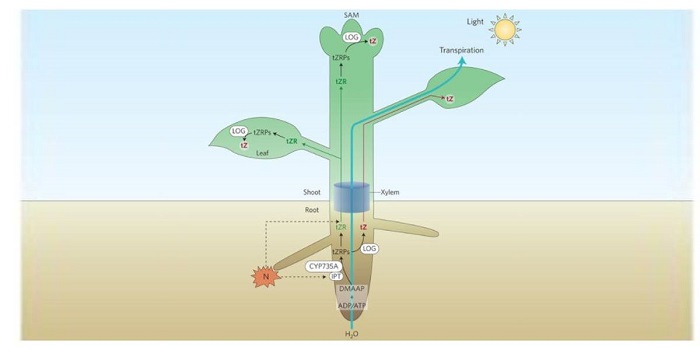
Systemic transport of trans-zeatin and its precursor have differing roles in Arabidopsis sho
Blog, Plant Science Research Weekly, Research, Research BlogPlant hormones are made in one tissue and usually transported to act in another. One example of this is the transport of cytokinin. In the root, the precursor trans-zeatin riboside (tZR) is synthesized, then xylem loaded and transported to the shoot. Once at a site of action like the leaf or shoot…

Cytokinin induces genome-wide binding of the type-B response regulator ARR10 to regulate growth and development in Arabidopsis ($)
Blog, Plant Science Research Weekly, Research, Research BlogCytokinin, one of the major plant hormones, is involved in many aspectis of plant growth and development. Over the last few decades, the biosynthetic and signaling pathways have been discovered. The mechanistic explanation to control a myriad array of gene expression is still a black box. Zubo et al.…

